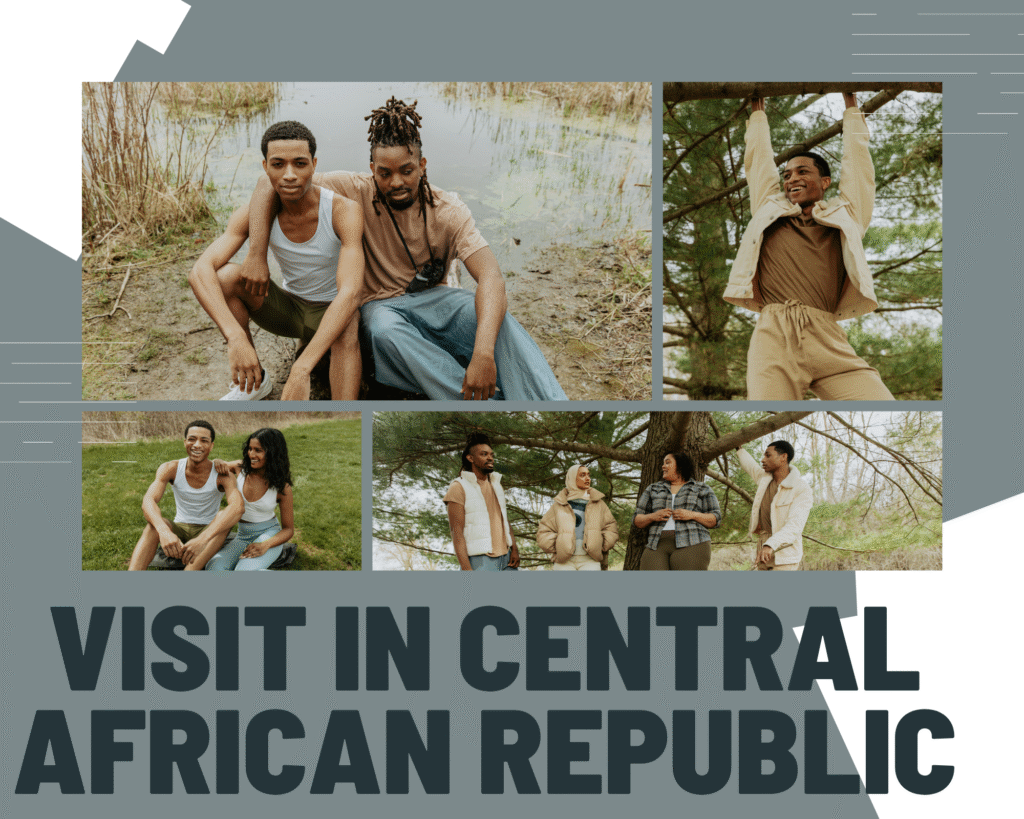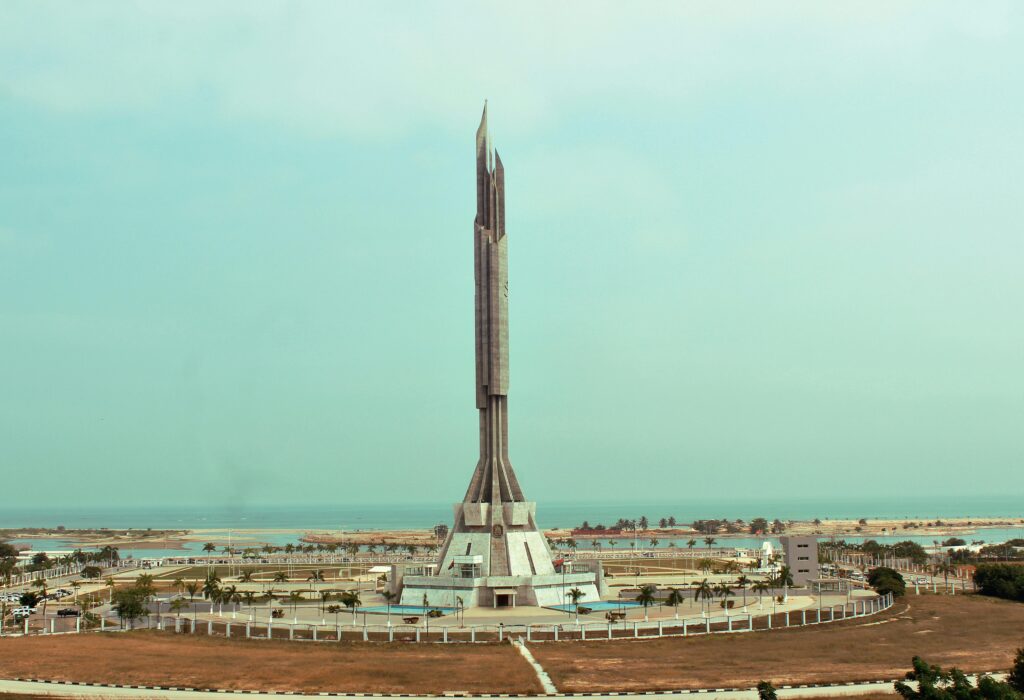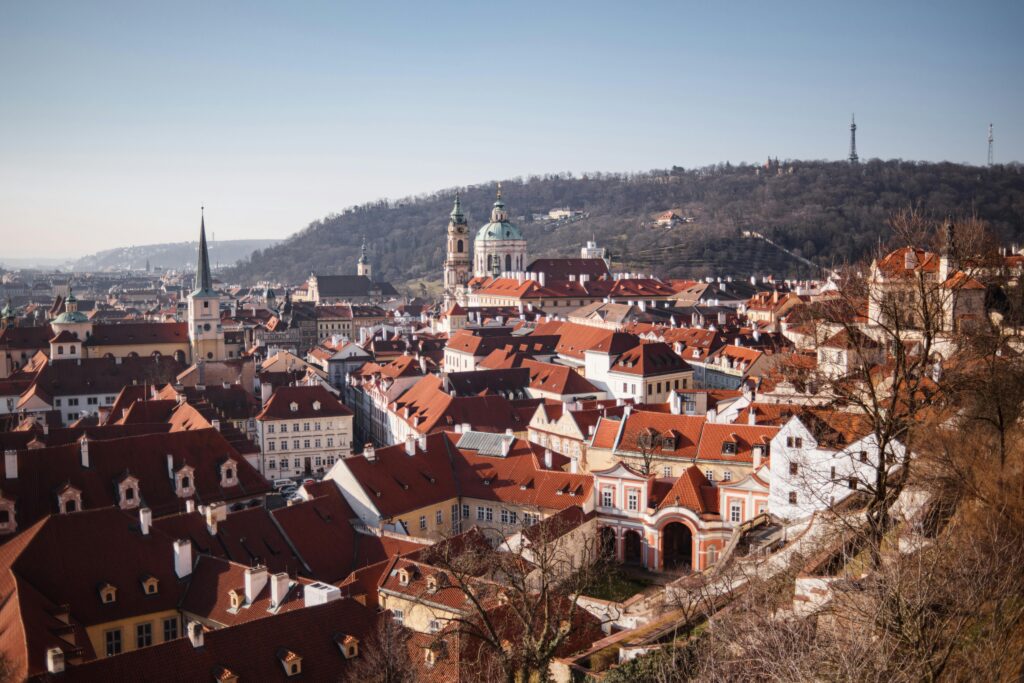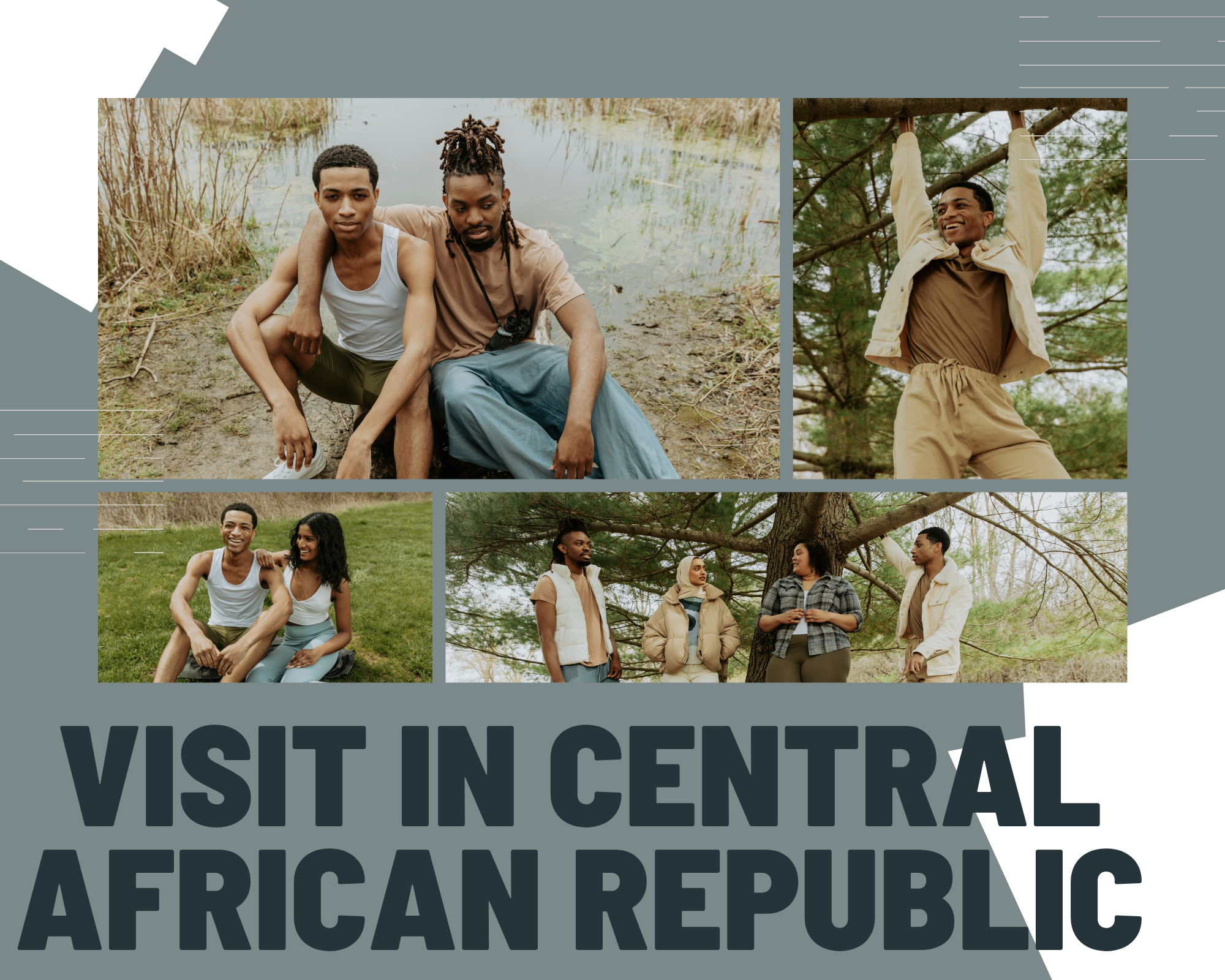The Central African Republic (CAR), located in the heart of Africa, is often overlooked due to its unstable government and limited progress. However, for the brave tourist seeking a place off the main road that is rich in natural beauty, wildlife, and diverse cultures, CAR offers unbeatable options. Some of the most pristine jungles in Africa, rare wildlife species, and vibrant local cultures reside in this country despite concerns about infrastructure and safety.

1. National Park of Dzanga-Sangha
Dzanga-Sangha National Park is the country’s most popular ecotourism spot. It is in the southwest of the country, close to the borders with Cameroon and the Republic of the Congo. It is one of the naturally richest places in Africa and is a UNESCO World Heritage Site. It is part of the bigger Sangha Trinational Protected Area.
Dzanga Bai:
This area in the forest is one of the best places in the world to observe forest elephants in their natural habitat. It is known as the “Village of Elephants.” Dozens of elephants visit here every day to drink, bathe, and socialise with one another.
Western Lowland Gorillas:
Dzanga-Sangha is one of the few places where tourists can observe groups of these rare animals, which have become accustomed to people with the help of knowledgeable local guides.
Cultural Encounters:
The Ba’Aka people live in the park. They are one of the last groups of hunter-gatherers who still live in the bush. People can participate in cultural activities such as net hunts, tours of medicinal plants, and traditional music and dance.
Animals and plants:
The park is home to over 350 different kinds of birds, as well as elephants, gorillas, bongos, and sitatungas.
How to Get There:
The closest town is Bayanga, which can be reached by private plane from Bangui or via a rough, long road trip. Places to stay, such as the Sangha Hostel, offer comfortable stays and guided tours.
2. The national park of Manovo-Gounda St. Floris
This UNESCO World Heritage Site is located in the northeast of the Central African Republic (CAR). It is harder to get to, but brave tourists will still enjoy it. It’s over 17,000 square kilometres kilometres in size, and it has a diverse range of environments, from grasslands to forests to marshes.
Watching wildlife:
It’s home to lions, elephants, cheetahs, leopards, and black rhinos, although hunting has had a significant impact on their numbers. Conservation attempts are still going on.
Birds:
This park is an excellent spot to observe birds, boasting over 320 species.
Beautiful Scenery:
Africa’s natural beauty is stunning, featuring rolling savannahs, dramatic cliffs, and seasonal rivers.Due to ongoing unrest in the northeast, visiting this park requires careful planning, ideally with the assistance of local guides, an NGO, or a protection group.
3. Nature Park Chinko
Chinko is one of the most significant protection projects in Africa. It combines species from the tropical jungle and the grassland. It spans over 17,000 square kilometres and is located in the eastern Central African Republic (CAR). African Parks runs it, and its primary goals are restoration and ecosystem repair.
Why You Should Go:
Chinko is located a considerable distance away and offers a genuine, immersive experience in the African desert.In this area, forest elephants, lions, and giraffes coexist, making it one of the few places in central Africa where these three species can be found together.
Sustainable Tourism:
When tourism resumes, it will likely be closely regulated and centred on environmental conservation.Currently, Chinko is not easily accessible to tourists, but it holds great promise for ecotourism in the future.
4. The Boali Falls
The most famous and easily accessible waterfalls in the country are the Boali Falls (Chutes de Boali), located approximately 100 kilometres northwest of Bangui. The falls are both a beautiful and essential place in the CAR. During the rainy season, they drop about 50 meters.
Photogenic Beauty:
The falls are at their most beautiful when it rains, which is from May to October. Because it’s close to Bangui, it’s easy to get away for the day or the night.
Waterfall Power Plant:
The falls feature a small power plant that provides electricity to Bangui, although it is not always operational.
Some helpful hints:
There is a designated area for watching and some small places nearby. Most people believe the area is safe, but tourists should still consult local guides to obtain the most up-to-date information.
5. Bangui: The Capital City
Bangui is the country’s main airport and a good place to see how people live in the CAR’s cities, but it’s not a popular tourist spot. In the middle of the Ubangi River, which flows into the Democratic Republic of the Congo, is this place.

Things You Have to See:
The Notre-Dame Cathedral of Bangui is a building from the colonial era that is still used as a place of worship. The Boganda National Museum is a small museum about the country’s pre-colonial and colonial history, traditional crafts, and culture. It is named after the country’s national hero, Barthelemy Boganda.PK5 Market is the city’s bustling central market, where tourists can observe locals conducting business, although safety concerns may arise.
Food and nightlife:
Cassava leaves, fried fish, peanut soups, and potatoes are among the popular foods in the area. In Bangui, several basic hotels and restaurants cater to business travellers and individuals working for NGOs.
6. Trips on the Ubangi River
The Ubangi River runs through Bangui, allowing people to enjoy boat rides through beautiful scenery, catch fish, and experience the culture of the nearby Democratic Republic of the Congo.
Sunset trips:
People who run boats for fun may give short river trips. A variety of fish species, including catfish and Nile perch, inhabit the river.
Local Villages:
Some planned trips stop at riverside towns where you can meet locals and see how people used to live along the river.
7. The Bamingui-Bangoran Biosphere Reserve and National Park
One of the longest protected places in the country is this park in the northern part of CAR. Even though its infrastructure was damaged in wars, work is still being done to repair it.
Things to do:
Animals such as lions, big elands, roan antelopes, and various types of snakes inhabit the area.
Birdwatching:
With over 400 species seen, this is a birdwatcher’s dream.
Scenic Drives:
If it’s safe, 4×4 trips here are a fun and rustic way to see animals.People considering a trip should consult local guides and protection groups for the latest safety information.
8. Villages in the area and cultural tourism
The heart of CAR is in its rural villages and customs, not in its national parks or cities.Experiences in culture include traditional music and dance, particularly among the Gbaya, Banda, and Mandjia groups.
Crafts:
In village markets, people often create and sell items such as carved wood, beaded jewellery, and woven mats.
Community-Based Tourism:
In safer areas, it may be possible to stay overnight in towns with the assistance of local NGOs or cultural cooperatives. Although it isn’t regulated, cultural tourism is a growing industry that could benefit the Central African Republic. It provides tourists with unique and polite experiences of Central African customs.Travellers should think about these things: travel warnings and safetyThere have been times of violent war in the Central African Republic, and some parts of the country are still unsafe.

Travellers need to check:
The most recent travel warnings from their office or consulate.Travel rules from the UN or an NGO.Updates for local security.Always go on trips with a trustworthy local guide, ideally one who works for an NGO or protection project.Most tourists who wish to visit CAR are required to obtain a visa, which can be obtained at offices in Paris or other regional cities. You must provide proof of a Yellow Fever vaccine.Care for your health Malaria prevention is essential.People should get vaccinated against cholera, hepatitis A, typhoid, and meningitis.It can be challenging to find clean water to drink and essential emergency supplies.
Moving around:
It’s challenging to navigate the roads, especially when it’s raining.There aren’t many places within the country, and most of the time, NGOs use private services.For travelling in the country, you need a 4×4.
In conclusion
Not every tourist will enjoy the Central African Republic. Still, those who are deeply interested in nature protection, culture, and exploring the world’s edge will have a truly satisfying time there. CAR is one of the last truly wild places in Africa. From the beautiful forest elephants of Dzanga Bai to the mighty Boali Falls, from tracking gorillas to learning about Ba’Aka culture, there is a lot to do and see.
Visitors can enjoy and help protect this overlooked part of the continent if they plan, know the risks, and make a promise to be responsible tourists.

Leave a Reply